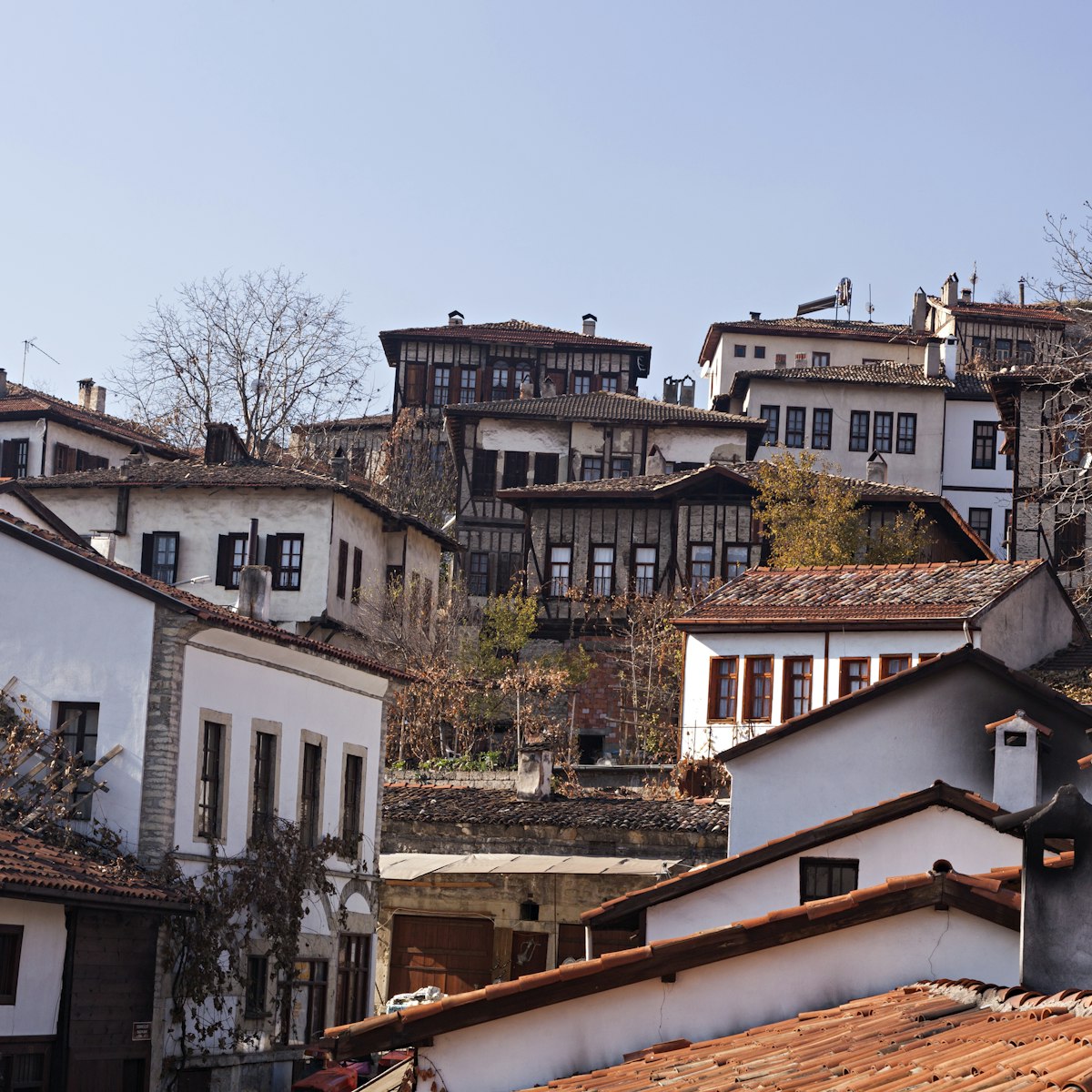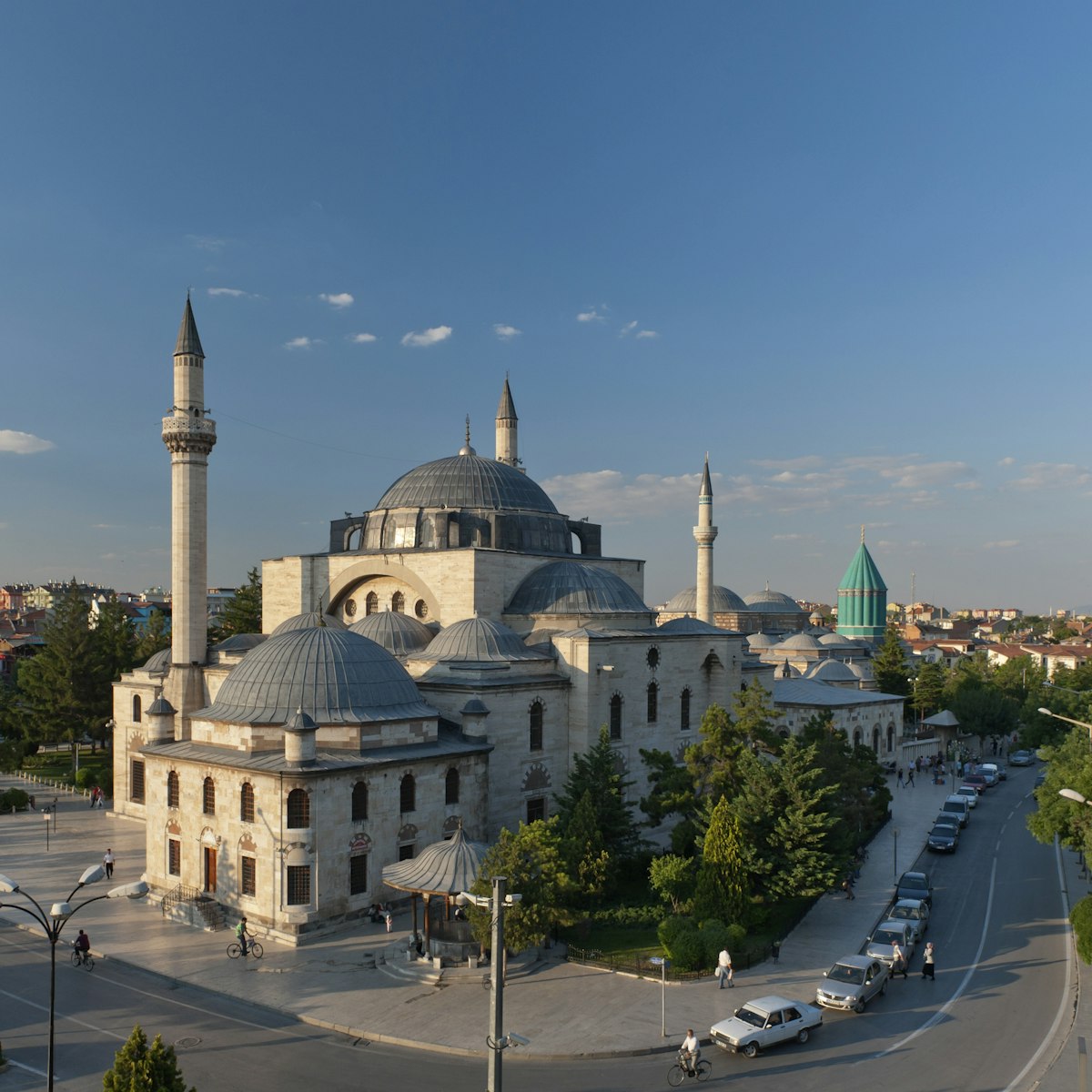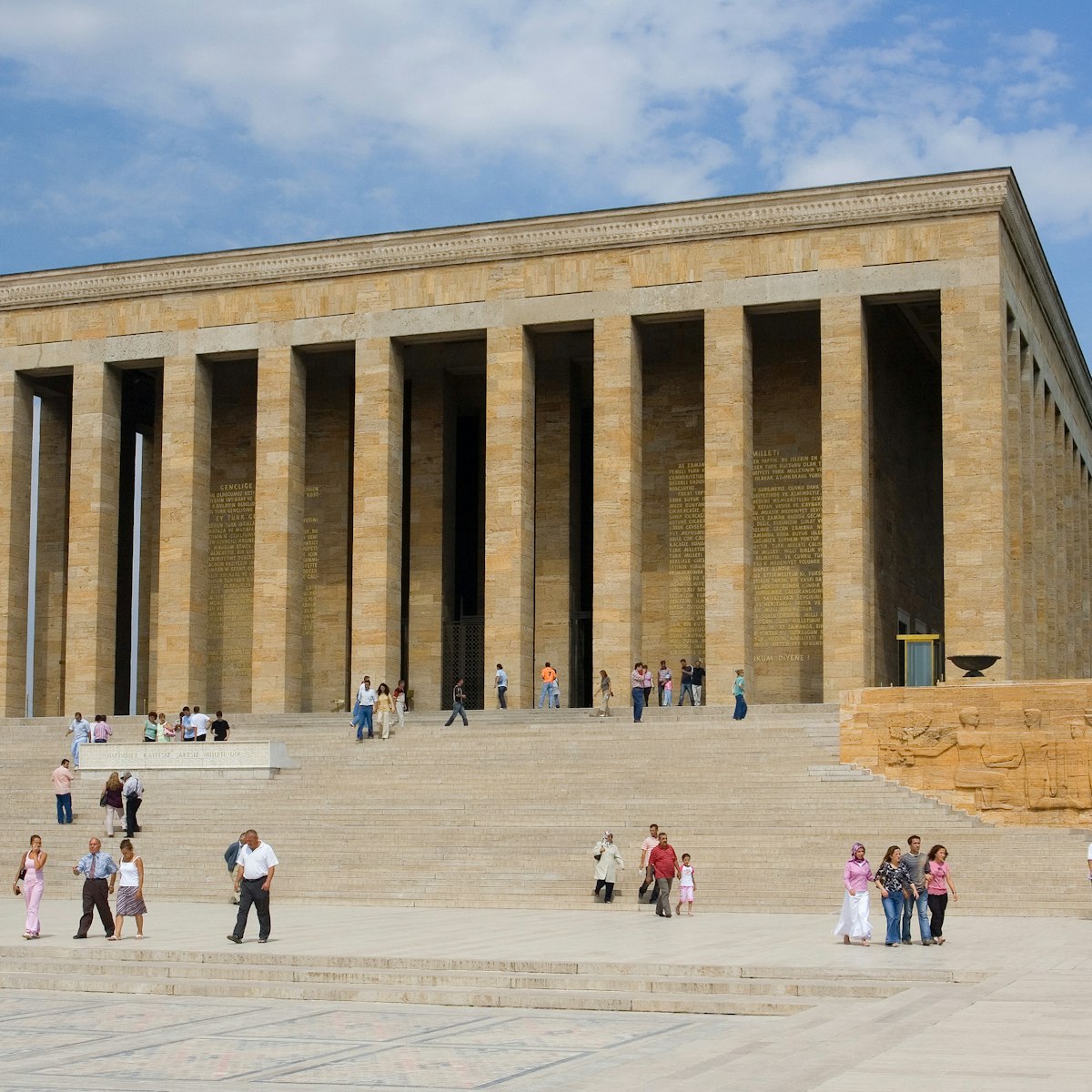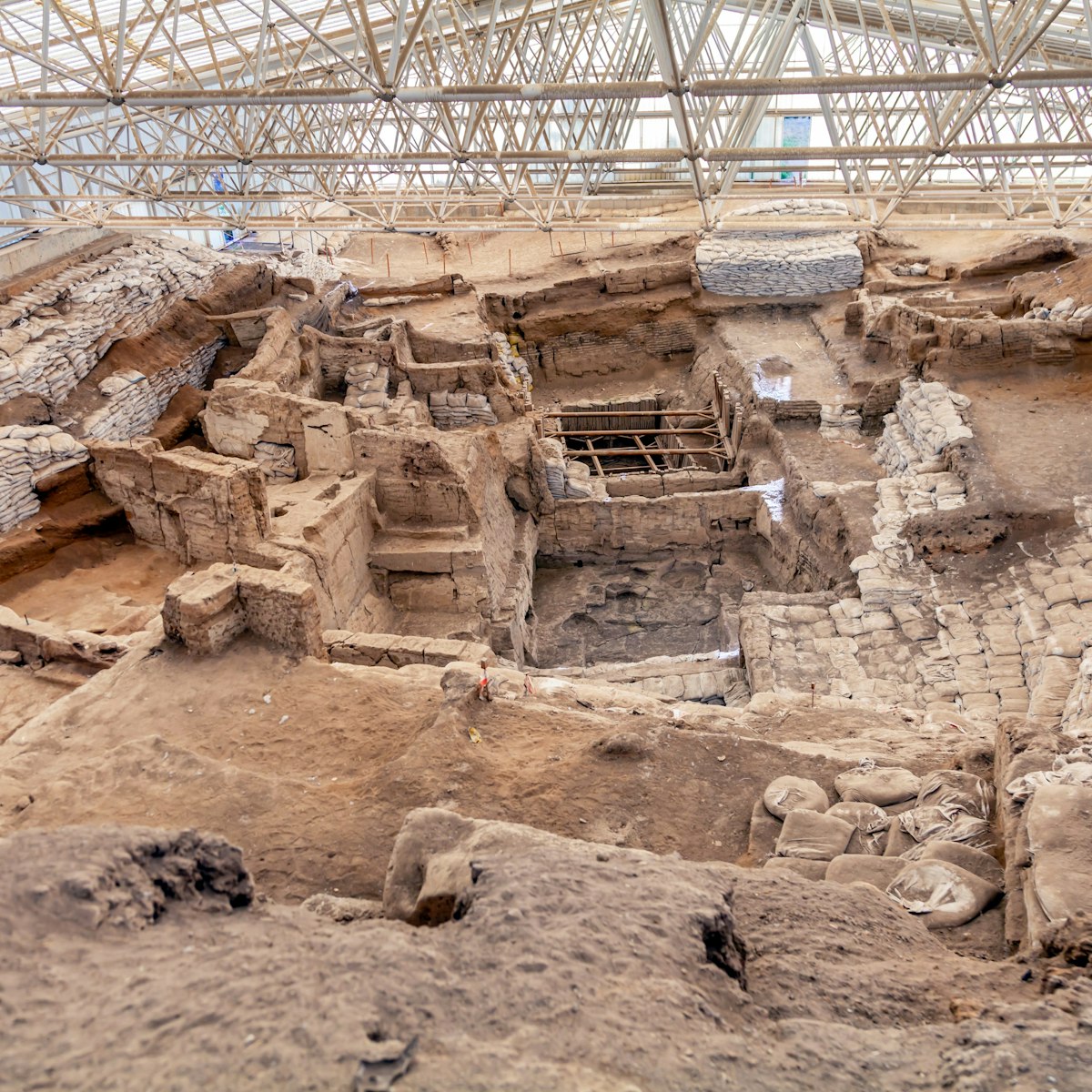
Museum of Anatolian Civilisations
Ankara
The best place in the country to get to grips with the complex weave of Turkey's history, the exhibits here house artefacts cherry-picked from just about…

Museum of Anatolian Civilisations
Ankara
The best place in the country to get to grips with the complex weave of Turkey's history, the exhibits here house artefacts cherry-picked from just about…

Safranbolu
The real joy of Safranbolu is simply wandering the cobblestone alleys. Everywhere you look in Eski Çarşı (Safranbolu's old town) is a feast for the eyes…

Central Anatolia
Excellent information boards provide a thorough grounding in both Hittite history and culture while the pieces on display – all unearthed at Hattuşa –…

Central Anatolia
Amid rolling hills and fertile fields, the hamlet of Kasaba, 17km northwest of Kastamonu, is a pretty but unlikely place to find one of Turkey's finest…

Central Anatolia
Tokat's impressive museum is housed within the beautifully restored Arastalı Bedesten (covered market). The collection packs in intricately decorated…

Central Anatolia
Tokat's historic neighbourhood of slouching Ottoman houses, nestled at the foot of the castle hill, hides this gem of a mosque with floral motifs crawling…

Konya
For Muslims and non-Muslims alike, the main reason to come to Konya is to visit this former lodge of the whirling dervishes and home to the tomb of…

Ankara
The monumental mausoleum of Mustafa Kemal Atatürk (1881–1938), the founder of modern Turkey, sits high above the city with its abundance of marble and air…

Amasya
Looming above the northern bank of the river is a sheer rock face with the conspicuous rock-cut Tombs of the Pontic Kings. The tombs, chiselled deep into…

Central Anatolia
Hattuşa's star attraction is this postern gate complex with an artificial mound pierced by a 70m-long tunnel. The Hittites built the tunnel using a…

Amasya
Amasya's museum packs in treasures from the Chalcolithic era up to the Byzantine age in its ground-floor galleries. Look out for the famous bronze…

Amasya
The graceful Sultan Beyazıt II Cami (1486) is Amasya's largest külliye (mosque complex), with a medrese (seminary), fountain, imaret (soup kitchen) and…

Central Anatolia
Dating to 1218, this was one of the most important medical schools built by the Seljuks and was once Anatolia's foremost hospital.

Erimtan Archaeology & Arts Museum
Ankara
Ankara's newest museum houses the astounding collection of mostly Roman (but also Bronze Age, Hittite and Byzantine) artefacts collected over the years by…

Konya
Gorgeously restored, the interior central dome and walls of this former Seljuk theological school (1251) showcase some finely preserved blue-and-white…

Central Anatolia
Commissioned by the Mongol-İlkhanid vizier Şemsettin Güveyni after defeating the Seljuks at the battle of Kosedağ, the Çifte Minare Medrese (1271) has a…

Central Anatolia
In the Bronze Age, the Hittite kingdom encompassed an area that stretched west to the Aegean Sea and south into Syria with its command centre here in the…

Konya
Rising 20m above the surrounding flat Konya plains, the East Mound at Çatalhöyük is one of the most important, and largest, Neolithic settlements on earth…

Central Anatolia
This grand complex, combining both a mosque and hospital, lords it up on the hill above the village. Renowned for its craftwork, the entrance doorways are…

Central Anatolia
Yazılıkaya means 'Inscribed Rock', and that's exactly what you'll find in these outdoor rock galleries, around 2km from Hattuşa. There are two galleries:…

Central Anatolia
One of Turkey's most important Bronze Age sites (though settlement here actually stretches from the Chalcolithic through to the Iron Age), Alacahöyük's…

Ankara
The imposing hisar (citadel) is the most interesting part of Ankara to poke about in. This well-preserved quarter of thick walls and winding streets took…

Central Anatolia
Just before WWI, British traveller Gertrude Bell travelled 42km northwest of the town of Karaman and recorded the existence of a cluster of Byzantine…

Central Anatolia
Turn left on GOP Bulvarı just before Latifoğlu Konağı and cross the canal to get to this restored dervish lodge with its museum to all things dervish,…

Central Anatolia
This vast complex, dating from the 14th century BC and destroyed around 1200 BC, is the closest archaeological site to the entrance gate and the best…

Amasya
Perched precariously atop rocky Mt Harşena, Amasya's kale (castle) offers magnificent views down the valley. The much-repaired walls date from Pontic…

Konya
Konya's most important religious building after the Mevlâna shrine, this Seljuk mosque bestrides Alaaddin Tepesi. Built for Alaeddin Keykubad I, Sultan of…

Central Anatolia
Çorum's museum is well worth a stop particularly if you're interested in Turkey's Chalcolithic, Bronze Age and Iron Age eras. Pieces have been cherry…

Central Anatolia
In 1957 Austrian archaeologist Alfred Koerte discovered Gordion, and with it the intact tomb of a Phrygian king, probably buried some time between 740 and…

Central Anatolia
The largest caravanserai in Anatolia, the Sultanhanı was constructed in 1229, during the reign of the Seljuk sultan Alaaddin Keykubad I, and restored in…

Central Anatolia
Just beyond Yassıhöyük village – 2km west of the museum – is the weatherbeaten 10th-century-BC fortified citadel area. Excavations here have yielded a…

Central Anatolia
At Aslanlı Kapı, two stone lions (one rather poorly reconstructed) protect the city from evil spirits. This is one of at least six gates in Hattuşa's 4000…

Ankara
Housed inside the building (built 1927) that served as Atatürk's mausoleum until the Anıt Kabir was built, the Ethnography Museum has a small but well…

Konya
The rather dusty Archaeological Museum houses interesting finds from Çatalhöyük, including the skeleton of a baby girl, clutching jewellery made of stone…

Safranbolu
Originally built in Byzantine times but restored in the 1790s by İzzet Mehmet Paşa, İncekaya ('thin rock') Aqueduct is just over 7km north of Safranbolu…

Museum of Wooden Artefacts & Stone Carving
Konya
The İnce Minare Medresesi (Seminary of the Slender Minaret), now the Museum of Wooden Artefacts & Stone Carving, was built in 1264 for Seljuk vizier Sahip…

Central Anatolia
In the museum opposite the Midas Tumulus, Macedonian and Babylonian coins show Gordion's position at the centre of Anatolian trade, communications and…

Ankara
The tradition of carpets being gifted to mosques has helped preserve many of Turkey's finest specimens. This extensive collection – which once graced the…

Central Anatolia
Turkey has a glut of Ottoman houses thrown open to the public, but this one's in a league of its own. It's actually half of one enormous mansion that was…

Ankara
Ankara's most revered mosque is Hacı Bayram Cami. Hacı Bayram Veli was a Muslim 'saint' who founded the Bayramiye dervish order around 1400. Ankara was…